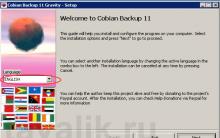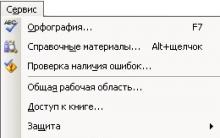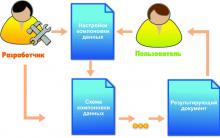В связи с прекращением поддержки PHP MySQL в 2011 году для работы с базами данных все более широкое применение находят PDO или MySqli . Они обладают лучшей функциональностью (чем MySQL) и предлагают ООП (объектно-ориентированный интерфейс) API. Какой из них лучше, это тема для другой статьи, в этой статье мы попытаемся разобраться с основами работы с MySqli. Поэтому, без дальнейших предисловий, перейдем к рассмотрению соединения (connect), выбора (select), вставки (insert), обновления (update) и удаления (delete) записей (данных/документов/информации) посредством PHP MySqli. Надеюсь, что данная статья будет полезна при решении проблем, которые могут возникнуть при работе с PHP MySqli.
Установка MySqli
При использовании PHP версии 5.3.0 +, MySqli доступен по умолчанию; для более старых версий, чтобы сделать его доступным, надо включить php_mysqli.dll DLL внутри файла php.ini и отредактировать php.ini, раскоментировав строчку extension=php_mysqli.dll . В линуксе MySQLIi будет установлен автоматически при установке пакета PHP5 mysql. Более подробную информацию об установке в системах windows и linux можно найти .
Соединение с базой данных
MySqli предлагает два способа соединения с базой данных: процедурный и объектно-ориентированный. Рекомендуется использовать объектно-ориентированный. Процедурный похож на (старый) MySql, поэтому для новичков его использование, возможно, будет предпочтительней, стоит помнить, что им пользоваться не рекомендуется.
PHP
//процедурный стиль $mysqli = mysqli_connect("host","username","password","database_name"); //объектно-ориентированный стиль (рекомендуется) $mysqli = new mysqli("host","username","password","database_name");Ниже показано открытие соединения с базой данных объектно-ориентированным способом. Этот способ будет использоваться и во всех приведенных ниже примерах.
PHP
connect_error) { die("Error: (". $mysqli->connect_errno .") ". $mysqli->connect_error); } ?>Выбор (SELECT) результирующего ряда в виде ассоциативного массива
mysqli_fetch_assoc() : в приведенном ниже коде происходит извлечение результирующего ряда в виде ассоциативного массива. Возвращаемый массив содержит строки, полученные из базы данных, где имена столбцов будут являться ключом, используемым для доступа к внутренним данным. Как показана ниже, данные отображаются в виде HTML таблицы.
PHP
connect_error) { die("Error: (". $mysqli->connect_errno .") ". $mysqli->connect_error); } //MySqli Select Query $results = $mysqli->| ".$row["id"]." | "; print "".$row["product_code"]." | "; print "".$row["product_name"]." | "; print "".$row["product_desc"]." | "; print "".$row["price"]." | "; print "
Выбор (SELECT) результирующего ряда в виде массива (ассоциативный, обычный, или в оба)
Фукнция fetch_array() : возвращает массив с объединенным функционалом mysqli_fetch_row и mysqli_fetch assoc . Эта функция является расширенной версией функции mysqli_fetch_row() ; для доступа к данным можно использовать как строку, так и числа.
PHP
connect_error) { die("Error: (". $mysqli->connect_errno .") ". $mysqli->connect_error); } //MySqli Select Query $results = $mysqli->query("SELECT id, product_code, product_desc, price FROM products"); print "| ".$row["id"]." | "; print "".$row["product_code"]." | "; print "".$row["product_name"]." | "; print "".$row["product_desc"]." | "; print "".$row["price"]." | "; print "
Выбор (SELECT) результирующего ряда в виде объекта
fetch_object() : чтобы получить результирующий набор в виде объекта, нужно воспользоваться MySqli fetch_object() . Атрибуты объекта будут отображать имена полей, найденных внутри результирующего набора.
PHP
connect_error) { die("Error: (". $mysqli->connect_errno .") ". $mysqli->connect_error); } //MySqli Select Query $results = $mysqli->query("SELECT id, product_code, product_desc, price FROM products"); print "| ".$row->id." | "; print "".$row->product_code." | "; print "".$row->product_name." | "; print "".$row->product_desc." | "; print "".$row->price." | "; print "
Выбор (SELECT) одиночного значение
Одиночное значение получить из базы данных можно посредством fetch_object (метод Cameron Spear).
PHP
connect_error) { die("Error: (". $mysqli->connect_errno .") ". $mysqli->connect_error); } //chained PHP functions $product_name = $mysqli->query("SELECT product_name FROM products WHERE id = 1")->fetch_object()->product_name; print $product_name; //output value $mysqli->close(); ?>Извлекаем (SELECT COUNT) количество строк в таблице
Иногда нужно узнать количество строк в таблице, особенно при нумерации страниц.
PHP
connect_error) { die("Error: (". $mysqli->connect_errno .") ". $mysqli->connect_error); } //get total number of records $results = $mysqli->query("SELECT COUNT(*) FROM users"); $get_total_rows = $results->fetch_row(); //hold total records in variable $mysqli->close(); ?>Выбор (SELECT) с помощью шаблонов (prepared statements)
prepared statements - специальный инструмент СУБД, позволяющий ускорить последовательное выполнение повторяющихся запросов, построенных по одному и тому же шаблону.
Одной из особенностей MySqli является возможность использования уже написанных шаблонов: то есть запрос достаточно написать один раз, после чего его можно многократно исполнять с различными параметрами. Использование уже написанных шаблонов улучшает производительность для больших таблицах и сложных запросов. Для предотвращения попадания вредоносного кода анализ каждого запроса производится сервером отдельно.
Код ниже использует шаблон (Prepared statement), чтобы получать данные из базы данных. Заполнитель ? в запросе SQL играет роль маркера и будет замещен параметром, который, в свою очередь, может быть строкой, целым числом, double или blob. В нашем случае это строка $search_product .
PHP
$search_product = "PD1001"; //product id //create a prepared statement $query = "SELECT id, product_code, product_desc, price FROM products WHERE product_code=?"; $statement = $mysqli->prepare($query); //bind parameters for markers, where (s = string, i = integer, d = double, b = blob) $statement->bind_param("s", $search_product); //execute query $statement->execute(); //bind result variables $statement->| ".$id." | "; print "".$product_code." | "; print "".$product_desc." | "; print "".$price." | "; print "
Тот же запрос с несколькими параметрами:
PHP
$search_ID = 1; $search_product = "PD1001"; $query = "SELECT id, product_code, product_desc, price FROM products WHERE ID=? AND product_code=?"; $statement = $mysqli->prepare($query); $statement->bind_param("is", $search_ID, $search_product); $statement->execute(); $statement->bind_result($id, $product_code, $product_desc, $price); print "| ".$id." | "; print "".$product_code." | "; print "".$product_desc." | "; print "".$price." | "; print "
Вставка (INSERT) записи
Запись ниже вставляет в таблицу новый ряд.
PHP
real_escape_string("P1234")."""; $product_name = """.$mysqli->real_escape_string("42 inch TV")."""; $product_price = """.$mysqli->real_escape_string("600")."""; //MySqli Insert Query $insert_row = $mysqli->query("INSERT INTO products (product_code, product_name, price) VALUES($product_code, $product_name, $product_price)"); if($insert_row){ print "Success! ID of last inserted record is: " .$mysqli->insert_id .""; }else{ die("Error: (". $mysqli->errno .") ". $mysqli->error); } ?>
Отрывок ниже вставляет те же значения посредством шаблонов (Prepared Statement). Как мы уже говорили, шаблоны чрезвычайно эффективны против SQL инъекция. Для приведенного примера их использование является оптимальным вариантом.
PHP
//values to be inserted in database table $product_code = "P1234"; $product_name = "42 inch TV"; $product_price = "600"; $query = "INSERT INTO products (product_code, product_name, price) VALUES(?, ?, ?)"; $statement = $mysqli->prepare($query); //bind parameters for markers, where (s = string, i = integer, d = double, b = blob) $statement->bind_param("sss", $product_code, $product_name, $product_price); if($statement->execute()){ print "Success! ID of last inserted record is: " .$statement->insert_id .""; }else{ die("Error: (". $mysqli->errno .") ". $mysqli->error); } $statement->close();
Вставка (INSERT) нескольких записей
Вставка нескольких рядов одновременно осуществляется путем включения ряда значений столбцов, где каждый ряд значений должен быть обнесен скобками и отделен от других запятой. Иногда нужно узнать, сколько записей было вставлено, обновлено или удалено, для этого можно воспользоваться mysqli_affected_rows .
PHP
//product 1 $product_code1 = """.$mysqli->real_escape_string("P1")."""; $product_name1 = """.$mysqli->real_escape_string("Google Nexus")."""; $product_price1 = """.$mysqli->real_escape_string("149")."""; //product 2 $product_code2 = """.$mysqli->real_escape_string("P2")."""; $product_name2 = """.$mysqli->real_escape_string("Apple iPad 2")."""; $product_price2 = """.$mysqli->real_escape_string("217")."""; //product 3 $product_code3 = """.$mysqli->real_escape_string("P3")."""; $product_name3 = """.$mysqli->real_escape_string("Samsung Galaxy Note")."""; $product_price3 = """.$mysqli->real_escape_string("259")."""; //Insert multiple rows $insert = $mysqli->query("INSERT INTO products(product_code, product_name, price) VALUES ($product_code1, $product_name1, $product_price1), ($product_code2, $product_name2, $product_price2), ($product_code3, $product_name3, $product_price3)"); if($insert){ //return total inserted records using mysqli_affected_rows print "Success! Total " .$mysqli->affected_rows ." rows added."; }else{ die("Error: (". $mysqli->errno .") ". $mysqli->error); }
Обновление (Update)/удаление (Delete) записей
Принцип обновление и удаление записей тот же. Достаточно заменить строку запроса на MySql update или delete (не понял, сам смотри).
PHP
//MySqli Update Query $results = $mysqli->query("UPDATE products SET product_name="52 inch TV", product_code="323343" WHERE ID=24"); //MySqli Delete Query //$results = $mysqli->query("DELETE FROM products WHERE ID=24"); if($results){ print "Success! record updated / deleted"; }else{ print "Error: (". $mysqli->errno .") ". $mysqli->error; }Обновление с помощью шаблонов (prepared statements)
Пример обновления записи с помощью шаблонов (prepared statements) приведен ниже.
PHP
$product_name = "52 inch TV"; $product_code = "9879798"; $find_id = 24; $query = "UPDATE products SET product_name=?, product_code=? WHERE ID=?"; $statement = $mysqli->prepare($query); //bind parameters for markers, where (s = string, i = integer, d = double, b = blob) $results = $statement->bind_param("ssi", $product_name, $product_code, $find_id); if($results){ print "Success! record updated"; }else{ print "Error: (". $mysqli->errno .") ". $mysqli->error; }Удаление старых записей
Удалению подвергаются все записи, находящиеся на сервере больше 1 дня; количество дней можно задать самому.
PHP
//MySqli Delete Query $results = $mysqli-Вне сомнения, MySqli существенно лучше стандартного MySql расширения PHP, хотя принципы их работы довольно схожи. Надеюсь, приведенная выше информация окажется полезной при создании и переносе проектов в будущем. Для удобства ниже была реализована возможность скачать файлы примеров. Это можно сделать, нажав на кнопку download.
Many of the more mature databases support the concept of prepared statements. What are they? They can be thought of as a kind of compiled template for the SQL that an application wants to run, that can be customized using variable parameters. Prepared statements offer two major benefits:
- The query only needs to be parsed (or prepared) once, but can be executed multiple times with the same or different parameters. When the query is prepared, the database will analyze, compile and optimize its plan for executing the query. For complex queries this process can take up enough time that it will noticeably slow down an application if there is a need to repeat the same query many times with different parameters. By using a prepared statement the application avoids repeating the analyze/compile/optimize cycle. This means that prepared statements use fewer resources and thus run faster.
- The parameters to prepared statements don"t need to be quoted; the driver automatically handles this. If an application exclusively uses prepared statements, the developer can be sure that no SQL injection will occur (however, if other portions of the query are being built up with unescaped input, SQL injection is still possible).
Prepared statements are so useful that they are the only feature that PDO will emulate for drivers that don"t support them. This ensures that an application will be able to use the same data access paradigm regardless of the capabilities of the database.
Example #1 Repeated inserts using prepared statements
name and a value for the named placeholders.
$stmt
=
$dbh
->
prepare
("INSERT INTO REGISTRY (name, value) VALUES (:name, :value)"
);
$stmt
->
bindParam
(":name"
,
$name
);
$stmt
->
bindParam
(":value"
,
$value
);
// insert one row
$name
=
"one"
;
$value
=
1
;
$stmt
->
execute
();
$name
=
"two"
;
$value
=
2
;
$stmt
->
execute
();
?>
Example #2 Repeated inserts using prepared statements
This example performs an INSERT query by substituting a name and a value for the positional ? placeholders.
$stmt
=
$dbh
->
prepare
("INSERT INTO REGISTRY (name, value) VALUES (?, ?)"
);
$stmt
->
bindParam
(1
,
$name
);
$stmt
->
bindParam
(2
,
$value
);
// insert one row
$name
=
"one"
;
$value
=
1
;
$stmt
->
execute
();
// insert another row with different values
$name
=
"two"
;
$value
=
2
;
$stmt
->
execute
();
?>
Example #3 Fetching data using prepared statements
Example #4 Calling a stored procedure with an output parameter
If the database driver supports it, an application may also bind parameters for output as well as input. Output parameters are typically used to retrieve values from stored procedures. Output parameters are slightly more complex to use than input parameters, in that a developer must know how large a given parameter might be when they bind it. If the value turns out to be larger than the size they suggested, an error is raised.
$stmt
=
$dbh
->
prepare
("CALL sp_returns_string(?)"
);
$stmt
->
bindParam
(1
,
$return_value
,
PDO
::
PARAM_STR
,
4000
);
// call the stored procedure
$stmt
->
execute
();
print
"procedure returned
$return_value
\n"
;
?>
Example #5 Calling a stored procedure with an input/output parameter
Developers may also specify parameters that hold values both input and output; the syntax is similar to output parameters. In this next example, the string "hello" is passed into the stored procedure, and when it returns, hello is replaced with the return value of the procedure.
$stmt
=
$dbh
->
prepare
("CALL sp_takes_string_returns_string(?)"
);
$value
=
"hello"
;
$stmt
->
bindParam
(1
,
$value
,
PDO
::
PARAM_STR
|
PDO
::
PARAM_INPUT_OUTPUT
,
4000
);
// call the stored procedure
$stmt
->
execute
();
print
"procedure returned
$value
\n"
;
?>











Обзор Samsung Galaxy A7 (2017): не боится воды и экономии Стоит ли покупать samsung a7
Делаем бэкап прошивки на андроиде
Как настроить файл подкачки?
Установка режима совместимости в Windows
Резервное копирование и восстановление драйверов Windows